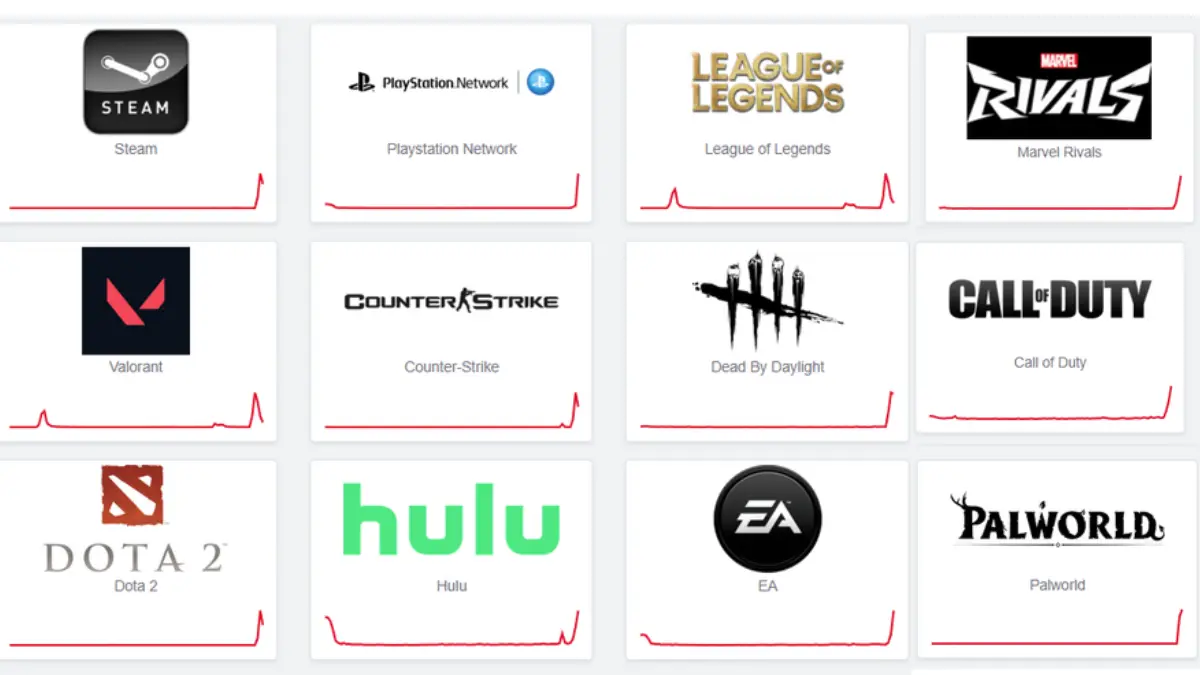Multiple major gaming platforms went dark over a 24-hour window starting late last night, with Steam and Riot Games bearing the brunt of what appears to be a large-scale distributed denial-of-service attack. Players reported login failures, frozen matches, and cloud save errors across several major services simultaneously.
Steam users found themselves locked out of the desktop client, mobile app, and store. Cloud save synchronization failed completely for many titles, leaving players unable to upload or download their progress. The disruption hit Steam’s tens of millions of concurrent users across multiple regions.
Riot Games players faced even more immediate problems. League of Legends matches froze mid-game, with all ten players in a lobby experiencing simultaneous 5–10 second freezes repeatedly throughout matches. Disconnects and server drops followed, forcing players out of ranked games and costing them LP and rating points through no fault of their own.
The outage spread beyond Steam and Riot. Users reported disruptions to Epic Games Store, Battle.net, EA services, Amazon game servers, Sony’s network, Monster Hunter servers, and GTA Online during the same timeframe. Some players also noted issues with broader internet services including Google, Microsoft products, T-Mobile, Verizon, and even Disney+ image loading, though these reports remained anecdotal and harder to verify.
One player captured the frustration: “I was playing league last night, and we had several random bursts of lag where all 10 players would just totally freeze for like 5–10 seconds at a time.” Another added: “I sincerely hope riot refunds the players who lost LP and RR from that. I lost 2 matches because of it.”
DDoS attacks work by flooding targeted servers with massive amounts of traffic from thousands or millions of hijacked devices, overwhelming the infrastructure and preventing legitimate users from connecting. Gaming platforms make attractive targets because their real-time nature makes disruptions immediately visible and impactful, yet they avoid the serious legal consequences that come with attacking critical infrastructure or financial systems.
Companies like Valve and Riot employ sophisticated defenses against these attacks. They use global content delivery networks, traffic scrubbing centers, and automated scaling through providers like Cloudflare and Akamai. Despite these protections, login servers and matchmaking systems remain vulnerable to sudden traffic surges, and active matches can suffer from packet loss and latency spikes when the underlying network infrastructure comes under pressure.
Gaming networks have faced DDoS attacks for years, with memorable large-scale disruptions hitting PlayStation Network and Xbox Live during holiday periods. The industry sees sustained attacks during peak hours, major game releases, and patch deployments when player counts surge.
The competitive gaming impact extended beyond simple inconvenience. Players stuck in ranked matches when servers froze faced automatic losses and rating penalties. Cloud save failures raised concerns about lost progress, though local save files typically remain intact and can overwrite cloud versions once services recover.
What’s still unknown
No platform has officially confirmed the root cause of the outages or whether they stemmed from a coordinated attack. No group has claimed responsibility, and there’s no evidence of data theft or ransom demands. The disruptions appear limited to service availability rather than security breaches.
Players affected by ranked match penalties during the outage window are waiting to see if Riot and other publishers will issue compensation or rating restoration. Official status pages and postmortems should clarify the exact duration, affected regions, and whether the timing coincided with any specific events or updates that might have amplified the impact.


